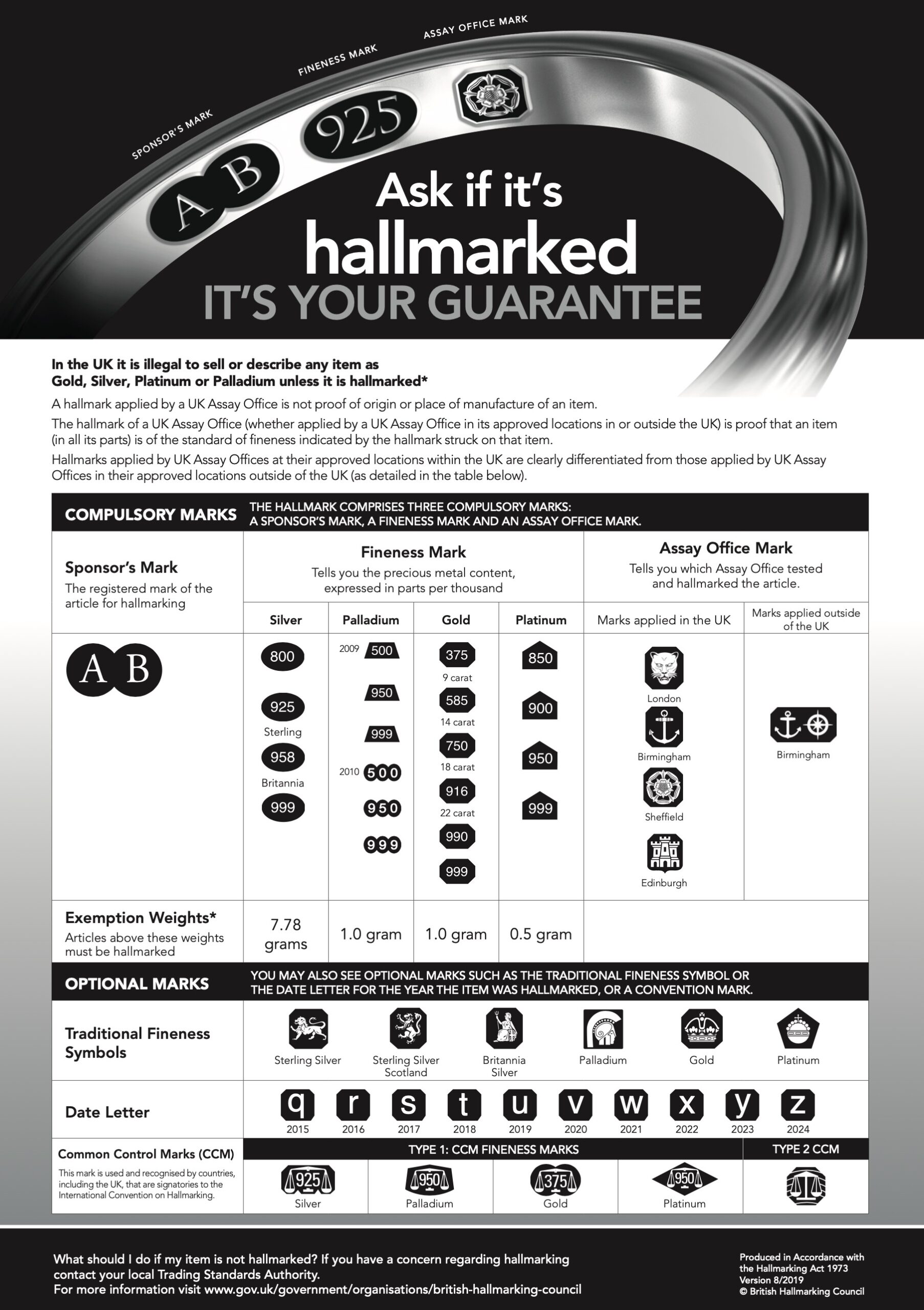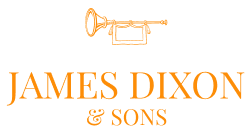Look for the Hallmark, It’s Your Guarantee
Today in the U.K. it is against the law to sell Sterling Silver weighing over 7.78 grams without a hallmark. To do so leads to prosecution.
Hallmarking is the oldest form of consumer protection that exists today. Introduced by King Edward I in the 14th Century as a method of testing precious metal for its purity. It is impossible to tell the precious metal content of an item just by looking at it. Pure silver is too soft to use alone for making cutlery and holloware, it needs to be alloyed with other baser metals, like copper, for manufacturing.
British requirements are for a high content of silver and an item can only be hallmarked Sterling Silver if it is a minimum of 925 parts fine silver per 1000 parts.
Sterling Silver articles are assayed i.e. tested to ensure they meet the required standard. To ‘assay’ means to test and assess the precious metal content of an item.
All our James Dixon and Sons silverware is sent to be tested at the Sheffield Assay Office, originally set up in 1773 by an Act of Parliament. Thirty local men became ‘Guardians’ to supervise the work of the Office. The number of Guardians allowed to be Silversmiths was later restricted to just ten to ensure that the Office offered an independent and impartial service – and was run for the benefit of the consumer rather than the manufacturer. This method of protection continues today and Silverware along with Gold and Palladium is unique in that it always carries its guarantee of authenticity.
For more information on Hallmarking please take a look here.

